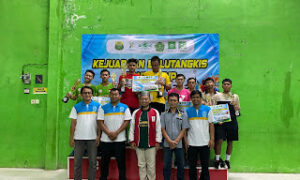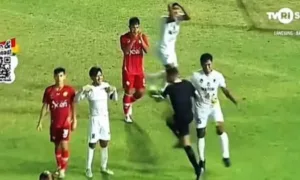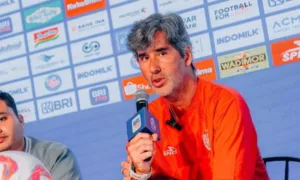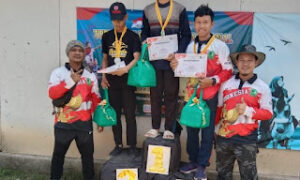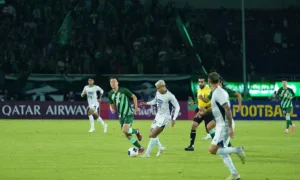THE PHYSICIAN AND SPORTSMEDICINE – VOL 27 – NO. 1 – JANUARY 1999
In Brief: With the growth of youth sports programs, overuse injuries in young people have become common. Making the diagnosis can be challenging, but often the real hurdles are in identifying the causes of injury. Growth-related factors require special considerations in injury management. A directed history assessing these and other causative factors and a systematic exam help formulate a comprehensive rehabilitation program. Recommendations for a successful return to activity and prevention of reinjury include avoiding heavy training loads and early sport-specific training, taking adequate rest periods, and ensuring proper supervision.
The benefits of regular exercise are not limited to adults. Youth athletic programs provide opportunities to improve self-esteem, acquire leadership skills and self-discipline, and develop general fitness and motor skills. Peer socialization is another important, though sometimes overlooked, benefit. Participation, however, is not without injury risk. While acute trauma and rare catastrophic injuries draw much attention, overuse injuries are increasingly common.
Diagnostic and treatment efforts should focus on how the injury developed and consider issues that are unique to growing athletes. An understanding of these concepts provides the basis for making specific injury-prevention recommendations.
Kids’ Activities Intensify
The true magnitude of youth sport participation in the United States is difficult to measure. Approximately 35 million children and young adults between ages 6 and 21 participate in sports, including 6 to 8 million in school programs (1,2). Over the last three decades participation among young women has increased dramatically (2). Involvement in nonscholastic clubs, in sports such as volleyball, basketball, softball, and gymnastics, also appears to be increasing. Furthermore, parents are hiring “personal” coaches and trainers to furnish specialized training beyond that provided by schools or clubs (3). Between school and club programs, private instruction, and popular summer sports camps, many youngsters are training and competing year-round. Though it is uncertain if more children and young adults are involved in sports, it seems clear that those who participate are doing so in a more extensive way.
Because training has become more sport-specific and nearly continuous, overuse injuries are now common among young athletes (table 1: not shown). Recent data indicate that
30% to 50% of all pediatric sports injuries are due to overuse (4-6). In a study (4) of children (aged 5 to 17) who presented to a sports injury clinic, 49.5% of 394 sports injuries were classified as overuse, with boys and girls displaying a similar frequency. The relative percentage of overuse injuries varies by sport, however. In a 2-year study (5) of 453 young elite athletes, 60% of swimmers’ injuries were due to overuse, compared to 15% of soccer players’ injuries. Athletes who had overuse injuries lost 54% more time from training and competition than those who had acute injuries.
How Overuse Occurs
Overuse injuries occur when a tissue is injured due to repetitive submaximal loading. The process starts when repetitive activity fatigues a specific structure such as tendon or bone. With sufficient recovery, the tissue adapts to the demand and is able to undergo further loading without injury. Without adequate recovery, microtrauma develops and stimulates the body’s inflammatory response, causing the release of vasoactive substances, inflammatory cells, and enzymes that damage local tissue (7). Cumulative microtrauma from further repetitive activity ultimately causes clinical injury. In chronic or recurrent cases, continued loading produces degenerative changes leading to weakness, loss of flexibility, and chronic pain (8). Thus, in overuse injuries the problem is often not acute tissue inflammation, but chronic degeneration (ie, tendinosis instead of tendinitis).
Contributing Factors
An understanding of the risk factors contributing to overuse injuries is the cornerstone of prevention. These risk factors have typically been classified as intrinsic or extrinsic. In children, issues specific to the immature musculoskeletal system deserve special consideration (table 2). (See “Case Report: Knee Pain in a New Runner,” below.)
Table 2. Factors Contributing to Overuse Injury
Intrinsic Factors
- Growth (susceptibility of growth cartilage to repetitive stress,
- inflexibility, muscle imbalance)
- Prior injury
- Inadequate conditioning
- Anatomic malalignment
- Menstrual dysfunction
- Psychological factors (maturity level, self-esteem)
Extrinsic Factors
- Too-rapid training progression and/or inadequate rest
- Inappropriateequipment/footwear
- Incorrect sport technique
- Uneven or hard surfaces
- Adult or peer pressure
Growth-related factors. Two factors related to growth are particularly important. First is the susceptibility of growth cartilage to repetitive stress. In children, growth cartilage is present at the articular surface, physes, and apophyses (9).
The articular cartilage appears most vulnerable to injury at the ankle, knee, and elbow. The development of osteochondritis dissecans at these sites is poorly understood and is possibly related to repetitive microtrauma (10).
Apophyseal injuries, including tibial tubercle apophysitis (Osgood-Schlatter disease) and calcaneal apophysitis (Sever’s disease), are commonly attributed to overuse (11). They result from traction-induced microtrauma at the tendon-bone attachment. Contributing factors include the weakness of the growth cartilage relative to the tendon, and poor flexibility and increased traction during the adolescent growth spurt.
Physeal injuries may also be caused by repetitive loading. Growth plate injuries have been reported in the proximal humerus in throwers (12) and a badminton player (13) and in the proximal tibia of a runner (14). In gymnastics, repetitive loading of the wrists can injure the distal radial growth plate (15). It appears that metaphyseal ischemia inhibits mineralization within the zone of provisional calcification, prolonging chondrocyte life. This, together with continued division of chondrocytes in the proliferative zone, results in widening of the growth plate (16). Physeal injuries may produce partial or complete growth arrest (17).
The second growth-related factor that contributes to injuries is the rapid change in the relative lengths of the long bones and their adjacent muscle-tendon attachments. Joint tightness can develop when bones lengthen faster than muscle-tendon units, producing inflexibility and dynamic muscle imbalances. The discrepancy may also increase traction on the apophyses and stress at the joint surface (eg, patellofemoral joint).
Other intrinsic risk factors. Patients who have overuse injuries often have a history of previous injury, which may signal repeated errors in training or technique, an inadequately rehabilitated injury, or an unaddressed cause of the original injury. Menstrual dysfunction, often associated with a decrease in bone mineral density, appears to increase the risk of stress fractures in some athletes (18,19).
Alignment abnormalities have been associated with overuse injuries; these include pes planus, pes cavus, hyperpronation, tibial torsion, patellofemoral malalignment, femoral anteversion, and leg-length discrepancy. Although difficult to quantify, excessive ligamentous laxity also may predispose patients to overuse injury. Examples include anterior knee pain in a runner with a hypermobile patella or shoulder pain in a swimmer with glenohumeral instability. Laxity measurements are relatively static and may not accurately represent the dynamic situation (eg, velocity of pronation in a runner). The contributions of alignment problems and joint laxity to overuse injuries remain unclear because prospective studies are few (20). These limitations should be kept in mind when addressing anatomic alignment and joint laxity in individual rehabilitation programs.
The child’s level of conditioning is another important consideration. Youngsters will likely benefit from developing general strength and endurance before participating in a training program. Unfit children may lack the proprioceptive skills, and weak and/or inflexible musculoskeletal structures may be unable to withstand the forces of training. Proper preparation and age-appropriate activities may help reduce injury.
Psychological factors should also be considered. Pressures from peers and adults often play a role (see below), but it is important to recognize that the child’s level of maturity and self-esteem will influence motivation and the ability to focus on conditioning and safety.
Extrinsic risk factors. Changes in the components of the training program are frequently associated with overuse injury. Though variations in the frequency, intensity, and duration of training are necessary to improve performance, another important training element is often overlooked: rest. Gradual training progression accompanied by scheduled recovery periods is often well tolerated by young athletes. Abrupt increases in any facet of training and/or inadequate rest intervals often lead to overuse injury. An example is a young tennis player who enters a summer camp to work on his serve. Accustomed to practicing 2 hours per day, 5 days per week with the high school team, the athlete now spends 4 to 6 hours each day emphasizing the serve and quickly develops a rotator cuff tendinopathy. Parents and coaches should be aware that training programs designed for adults are not appropriate for young athletes. In fact, because of the great variation in physical and emotional maturity among children and adolescents, individualization of training schedules is encouraged.
Faulty equipment is another risk factor. Footwear should be well-fitted and suited to the demands of the activity. Running shoes should be replaced at regular intervals because they can lose more than 40% of their shock-absorbing capacity after 250 to 500 miles (21). Other examples include the grip size and string tension of a tennis racquet and the fit of a bicycle. Equipment changes may also result in injury. A well-conditioned track athlete who switches from training flats to spikes for interval workouts may develop lower-extremity problems from changes in running mechanics.
Poor technique can also produce injury. In tennis, for example, flexing the wrist at ball impact during the backhand stroke commonly causes lateral epicondylitis. Instruction in proper technique helps treat and prevent overuse injury. Finally, changes in training surfaces may lead to injury. Rapidly introducing hill running, running on a beach or other tilted surface, and running on uneven or hard surfaces can trigger injury.
Pressure from others–especially adults–may play a role in the development of overuse injury. Parents and coaches who promote excessive intensity or who encourage a “no pain, no gain” or win-at-all-costs attitude may well contribute to injury. Assessing a
child’s motivation can be helpful: Is he or she genuinely interested in playing, or doing so only because of others’ expectations? Children who have uncharacteristic symptoms or fail to progress as expected with treatment may be expressing their lack of interest in the sport.
Clinical Evaluation
History. A thorough history cannot be overemphasized. A detective-like approach will not only help establish the diagnosis, but will also suggest the severity of the injury and reveal many potential predisposing factors. Have patients describe when they first recognized the injury. Once this is determined, ask detailed questions about training in the several weeks before the first signs of injury:
- Was there a change in training intensity, frequency, or duration?
- Was a new technique or piece of equipment introduced?
- Is the athlete involved in other activities such as resistance training or physical education classes that could have contributed to the injury?
- When was the last athletic shoe purchase?
- Has there been a similar injury in the past, and does the patient have a history of other overuse injuries?
- How were past injuries treated?
In adolescent girls, document age of menarche and whether cycles are regular or irregular. Menstrual dysfunction should be evaluated concurrently.
Recording a patient’s age and reviewing the growth curve can determine if he or she is in a rapid growth period. The mean onset of the adolescent growth spurt is approximately 10 years for girls and 12 years for boys. Peak height velocity is reached, on average, at age 12 for girls and age 14 for boys. Injuries that occur without obvious training changes or contributing factors may simply be related to the musculoskeletal changes associated with accelerated growth.
Next, have the patient describe the location and quality of the pain and when it occurs during activity. Pain that occurs at the end of an activity and resolves before the next training session signals a relatively mild injury; pain during activity that impairs performance is more severe. One must always consider the possibility of occult tumors or rheumatologic conditions in young athletes who have chronic pain symptoms.
Observe patient-parent interaction in the exam room:
- Do the parents attempt to control the physician’s encounter with the child?
- Does the child seem enthusiastic about the sport?
- Do parents place an inappropriate emphasis on competition?
- What are the athlete’s and parents’ hopes regarding future participation? Are there aspirations for national-level competition or college scholarships?
Identify how the athlete, parents, or coaches have attempted to treat the injury. Those who have been to several physicians may have unrealistic expectations that should be addressed.
Physical examination. The examiner should localize the complaint, identify injured tissue, and assess all structures that dissipate force in the involved extremity. For a patient who has anterior knee pain, for example, the exam should proceed from the ground up, beginning with foot and ankle alignment and continuing proximally. This method can identify underlying malalignment, inflexibility, muscle imbalance, joint laxity, or restriction of motion. The examiner also should compare flexor-extensor muscle groups and the injured extremity to the uninjured.
Careful palpation of the painful area will often reveal the exact injury site. Recreating the loading pattern can help reproduce symptoms. Simple methods include having the patient run or hop in place or applying pressure over a musculotendinous structure while applying resistance at various joint angles. When provocative maneuvers are unsuccessful, examining the child immediately after the sports activity may be useful.
Occasionally, symptoms are difficult to localize. Poorly localized symptoms are not unusual for some overuse injuries, such as back pain in a dancer who has a stress reaction of the pars interarticularis. In other situations, the sport may be unmasking an underlying problem. Vague knee pain, for example, may be the presenting complaint of a patient who has osteochondritis dissecans, a hip disorder, or an osteosarcoma.
Imaging studies may be helpful in some situations. Radiographs can identify osteochondral lesions (figure 1), stress fractures, tumors, and growth-plate widening. Additional studies, such as bone scans or magnetic resonance imaging, may be useful if plain radiographs are unrevealing (figure 2). The specifics of each case guide the decision to obtain radiologic studies, and which to choose.
Treatment
The fundamental goal of treatment is to develop strong, flexible tissue that absorbs the forces of the sport. The principal measures: [Figure 2]
Relative rest. The initial phase of treatment involves protecting the injured site from a level of impact loading that perpetuates overuse by reducing training volume and using alternative activities to maintain aerobic conditioning and morale. The patient’s clinical history provides a guide to the amount of rest needed from sport-specific training (table 3: not shown). Less severe injuries such as mild patellofemoral pain warrant a 25% to 75% decrease in training load; a more severe injury, such as a stress fracture, initially requires complete rest from the offending activity. Examples of alternate activities include pool running with or without a flotation vest, bicycling, rowing, and swimming. Patients may continue sports activities that do not stress the injured area.
Ice. Ice, an effective modality that should be used throughout treatment, reduces swelling and pain by causing vasoconstriction, slowing nerve conduction, and reducing cellular metabolism (22). It should be applied lightly over a cloth or bandage for 10 to 20 minutes several times a day for the first 48 to 72 hours and after rehabilitation exercises. Ice massage, rubbing the ice in a circular motion over the injury, is another option.
Other modalities. Topical heat (ie, moist heat packs) may help increase collagen extensibility and reduce stiffness. Other modalities such as ultrasound, iontophoresis, and electrical stimulation may be useful adjuncts. The clinical benefits of nonsteroidal anti-inflammatory drugs (NSAIDs) have not been clearly demonstrated (23). When rest and ice have not relieved patients’ pain, a short NSAID course may reduce pain and allow rehabilitation to proceed.
Rehabilitation. Once pain has been controlled, supervised rehabilitation can begin. The objectives of rehabilitation are to restore range of motion, strength, flexibility, and
proprioception. Returning to the sport before reaching these endpoints increases the risk of reinjury.
As range of motion is restored, pain-free resistance exercises are begun. Isometrics and limited isotonics are often part of this stage; these activities should be supervised to guard against improper technique and equipment misuse. Soft-tissue techniques can be used to reduce adhesions and loosen tight structures.
Gentle flexibility exercises are added when strength and range of motion improve. Overstretching should be avoided. Strengthening and flexibility exercises should also address adjacent uninjured structures. Aerobic conditioning is also initiated to prepare patients for their return to sport. The level of pain during activity and symptoms and findings the following day guide the progression. Significant improvement signals the time to add eccentric and isokinetic exercises, which require close supervision to ensure correct technique. Simultaneous increases in exercise resistance and velocity should be avoided.
After range of motion, strength, and flexibility improve, gradually adding sport-specific activities allows patients to regain proprioception and reacquaint themselves with the biomechanics of the sport. Patients can resume training and competition when they have recovered their muscular and aerobic endurance and can perform sport-specific activities without pain.
Avoiding Reinjury
Athletes who complete a thorough rehabilitation may suffer reinjury if the risk factors that led to the problem are not addressed. Athletes, parents, and coaches should be educated about training errors that may have occurred, the importance of scheduled rest periods, and the need to avoid excessive training volumes, especially during the adolescent growth spurt. To correct poor technique, the coach or trainer often must instruct athletes and provide reminders about possible relapses.
Patients may benefit from advice on appropriate footwear and equipment. Over-the-counter shoe inserts can help modify biomechanical malalignment. In some situations, such as marked pes planus in a patient who has refractory plantar fasciitis, custom orthoses may be needed.
Preventing Overuse
The American College of Sports Medicine estimates that 50% of overuse injuries in children and adolescents are preventable (24). Preparticipation screening, required by most schools, should be encouraged for all children involved in organized athletics. This is an excellent opportunity to identify sport-specific injury risk factors and to assess young people’s maturity, skill level, and motivation for the sport. Parents should ensure that their children will receive proper supervision and coaching. They can lobby local organizations to sponsor coaches’ attendance at coaching and safety seminars.
Training programs should accentuate general fitness and avoid excessive volume. All programs for youngsters should include conditioning and flexibility. Early sport specialization should be eschewed. Adults may seize on an example of a child who began exclusive training for a sport and became a local or national success, but the daily repetition required to perfect sport-specific skills too often leads to injuries. Experimentation with different sports allows children to develop fitness and motor skills, enjoy the social aspects of sport, and choose the sports they prefer. Parents can be reassured that there are many examples of outstanding athletes who did not become involved in their sports until a relatively late age. Bill Rodgers, four-time winner of the Boston and New York marathons, started running cross-country at age 15. After Phoebe Mills won a bronze medal in gymnastics in the 1988 Olympics, she took up diving and competed in national competitions from 1990 to 1994. Michael Jordan didn’t make his high school’s varsity team until he was in 11th grade.
Because children rarely suffer overuse injuries when they control the intensity level, coaches and other adults should avoid setting rigid expectations about training intensity. Despite scarce data about training progression and injury, gradual progression should be stressed. A general guide is the “10% rule”: Total training (intensity, frequency, duration, or any combination of these) should increase no more than 10% at a time (6,24). Thus, a young runner who runs 20 miles per week would run 22 miles the next week, without changing pace. The rule is a useful starting point, but must be adjusted for each athlete.
Periodization may also help to reduce overuse injuries and prevent overtraining. This technique involves the systematic cycling of training loads over set periods of time with well-defined rest periods. Finally, training should be carefully monitored during the adolescent growth spurt. Because growth-related factors can predispose patients to injury, it may be appropriate to temporarily modify training during this period.
Return to Safe Play
A diligent search for contributing factors and an understanding of the issues that are unique to children are essential to injury management. Incorporating these elements into a comprehensive rehabilitation program usually results in a successful return to participation. Attention to preventive measures such as training progression and appropriate supervision will allow youngsters to continue to enjoy the many benefits of organized play.
References
- Landry GL: Sports injuries in childhood. Pediatr Ann 1992;21(3):165-168
- Stanitiski CL: Common injuries in preadolescent and adolescent athletes: recommendations for prevention. Sports Med 1989;7(1):32-41
- Dohrmann G, Henson S: A new ballgame for high school athletes. Los Angeles Times 1997, June 19:C1
- Watkins J, Peabody P: Sports injuries in children and adolescents treated at a sports injury clinic. J Sports Med Phys Fitness 1996;36(1):43-48
- Baxter-Jones A, Maffulli N, Helms P: Low injury rates in elite athletes. Arch Dis Child 1993;68(1):130-132
- Dalton SE: Overuse injuries in adolescent athletes. Sports Med 1992;13(1):58-70
- Herring SA, Nilson KL: Introduction to overuse injuries. Clin Sports Med 1987;6(2):225-239
- Nirschl RP: Elbow tendinosis/tennis elbow. Clin Sports Med 1992;11(4):851-870
- Micheli LJ: Overuse injuries in children’s sports: the growth factor. Orthop Clin North Am 1983;14(2):337-360
- Pappas AM: Osteochondroses: diseases of growth centers. Phys Sportsmed 1989;17(6):51-62
- Peck DM: Apophyseal injuries in the young athlete. Am Fam Physician 1995;51(8):1887-1888,1891-1895
- Gross ML, Flynn M, Sonzogni JJ: Overworked shoulders: managing injury of the proximal humeral physis. Phys Sportsmed 1994;22(3):81-86
- Boyd KT, Batt ME: Stress fracture of the proximal humeral epiphysis in an elite junior badminton player. Br J Sports Med 1997;31(3):252-253
- Cahill BR: Stress fracture of the proximal tibial epiphysis: a case report. Am J Sports Med 1977;5(5):186-187
- Caine D, Roy S, Singer KM, et al: Stress changes of the distal radial growth plate: a radiographic survey and review of the literature. Am J Sports Med 1992;20(3):290-298
- Jaramillo D, Laor T, Zaleske DJ: Indirect trauma to the growth plate: results of MR imaging after epiphyseal and metaphyseal injury in rabbits. Radiology 1993;187(1):171-178
- Albanese SA, Palmer AK, Kerr DR, et al: Wrist pain and distal growth plate closure of the radius in gymnasts. J Pediatr Orthop 1989;9(1):23-28
- Drinkwater BL, Nilson K, Chesnut CH III, et al: Bone mineral content of amenorrheic and eumenorrheic athletes. N Engl J Med 1984;311(5):277-281
- Myburgh KH, Hutchins J, Fataar AB, et al: Low bone density is an etiologic factor for stress fractures in athletes. Ann Intern Med 1990;113(10):754-759
- Ilahi OA, Kohl HW III: Lower extremity morphology and alignment and risk of overuse injury. Clin J Sport Med 1998;8(1):38-42
- Cook SD, Brinker MR, Poche M: Running shoes: their relationship to running injuries. Sports Med 1990;10(1):1-8
- Gieck JH, Saliba EN: Application of modalities in overuse syndromes. Clin Sports Med 1987;6(2):427-466
- Leadbetter WB: Anti-inflammatory therapy in sports injury: the role of nonsteroidal drugs and corticosteroid injection. Clin Sports Med 1995;14(2):353-410
- Current comment from the American College of Sports Medicine: The prevention of sport injuries of children and adolescents. Med Sci Sports Exerc 1993;25(suppl 8):1-7
Case Report: Knee Pain in a New Runner
A 13-year-old girl presented with a 2-week history of left anterior knee pain. She was a swimmer, but she had begun training with the school’s track program 3 weeks earlier, and running was a new sport for her. She had been running 8 to 10 miles per week (up to 2 miles per session) and said pain onset was gradual. At presentation, she reported pain with initiation of running such that she could no longer complete 1 mile. The patient said her pain was more noticeable when she walked up and down stairs and that her knee felt a bit stiff when she was sitting in class.
History. The patient did not recall any prior knee injury, and there was no history of locking, catching, swelling, or instability. She reported no other sports-related injuries and had not been strength training. The majority of the running was done on either the road or a dirt track. She had iced the knee the first few days she had pain, but had not done so recently. Instead, she purchased a neoprene knee sleeve, which did not provide much relief. She denied any pain when sleeping at night, and had no other joint complaints. Her medical and surgical histories were otherwise unremarkable. She had not yet begun menses.
The patient was accompanied by her mother. The interaction between mother and child appeared appropriate. The patient provided most information without prompting or much qualification from her mother. She stated that her participation in track stemmed from her own interest.
Physical examination. Height and weight were in the 35th and 20th percentiles for her age respectively. Her growth history was not available for review. Examination of the lower extremities revealed normal-appearing arch heights and mild genu valgum. Tubercle sulcus angles (seated Q angles) were slightly increased bilaterally. No pelvic obliquity was observed. No knee effusion was noted, and the patient demonstrated full pain-free range of motion without crepitus. Patellar inhibition testing was positive on the left, but negative on the right. Patellar tilting and medial glide were normal. The medial and lateral facets were nontender, and a nontender medial plica was noted. Hamstring flexibility was decreased bilaterally. Quadriceps tone was poor. The ligaments were stable. The patient’s running shoes were moderately worn cross-trainers.
Diagnosis. A working diagnosis of patellofemoral pain syndrome was established.
Treatment. The patient’s running was reduced to one quarter mile every other day, preferably on grass. Ice massage was recommended three to four times daily, and swimming was selected as an alternative activity for conditioning. She was instructed to begin daily isometric (open- and closed-chain) exercises for the quadriceps, hamstrings, and gastroc-soleus complex with an emphasis on the vastus medialis obliquus. A lower-extremity flexibility program was also started, focusing on the hamstrings. Proper running shoes were recommended. If symptoms were improving, she was allowed to run 1 1/2 miles total the second week and 2 miles the third week.
By the time of her follow-up visit 3 weeks later, the pain had resolved, and she was running 1/2 mile four times per week. Isotonic strengthening was begun to build lower-extremity strength. Running mileage was slowly increased.
At her final visit, 6 weeks after follow-up, she had been running with her team without limitation for 1 week. The patellar inhibition test was negative and knee flexibility and muscle tone had improved. She was advised to maintain strength and flexibility exercises and avoid rapid training changes.
Discussion. The patient’s pain was clearly related to the onset of her running program along with several other contributors. Intrinsic factors were growth, poor hamstring flexibility, inadequate conditioning, and anatomic malalignment (mild genu valgum and increased tubercle-sulcus angles). Extrinsic factors were rapid training progression, inappropriate footwear, and hard running surface (road).
Dr DiFiori is an assistant professor in the Department of Family Medicine Division of Sports Medicine and assistant team physician in the Department of Intercollegiate Athletics at the University of California, Los Angeles. Address correspondence to John P. DiFiori, MD, UCLA Department of Family Medicine, 200 UCLA Medical Plaza Building, Suite 220, Los Angeles, CA 90095; e-mail to jdifiori@ucla.edu

Terimakasih telah membaca di Aopok.com, semoga bermanfaat dan lihat juga di situs berkualitas dan paling populer Piool.com, peluang bisnis online Topbisnisonline.com dan join di komunitas Topoin.com.
